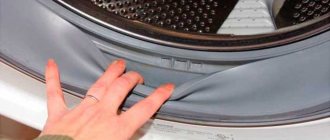A well-maintained and beautifully decorated aquarium will be an excellent interior decoration. However, aquarists often face a serious problem after starting the aquatic world - an unpleasant odor appears from the aquarium. Most often, this problem occurs among beginners due to improper or poor-quality fish care. In order to eliminate the problem that has arisen as quickly as possible, it is necessary to understand where it came from - this is the only way to prevent this from happening in the future. It is worth taking note that if the water begins to smell like a swamp, then this is a signal of a problem.
Why does the water in a fish aquarium stink?
The unpleasant odor appears due to the abundance of anaerobic bacteria of rotting and decomposition.
Bacteria decompose organic matter in the aquarium to hydrogen sulfide, which has a rotten smell.
The amount of organic dirt increases in an improperly equipped or unmaintained aquarium, which leads to the appearance of a rotten smell, mud or swamp in some cases.
In other words, the aquarium contains a large amount of rotting food and rotting organic matter, the decomposition of which causes the appearance of hydrogen sulfide and a rotten smell.
The appearance of a rotten smell is indirectly related to the nitrogen cycle.
Hydrogen sulfide does not participate in the process of the nitrogen cycle, but anaerobic bacteria manage to reduce rotting organic matter to hydrogen sulfide and sulfur in the soil thickness.
And the worse the nitrogen cycle copes with the abundance of rotting organic matter, the more hydrogen sulfide is formed in anaerobic areas of the soil.
This process is called soil acidification.
There are few reasons for soil acidification with the appearance of an unpleasant odor:
- Abundant overfeeding
- Feeding unwashed fresh food, such as bloodworms
- Thin, shallow or improperly laid soil layer
An improperly laid or thin layer of soil with anaerobic zones without access to oxygen creates an ideal habitat for anaerobic putrefactive bacteria.
The problem of fine soil is complicated by the absence or insufficient number of aquarium plants with a powerful and branched root system.
Plant roots push the soil apart, preventing the formation of anaerobic zones.
Why is oxygen access into the soil so important?
Oxygen oxidizes hydrogen sulfide, escaping it from the aquarium, which prevents the accumulation of hydrogen sulfide to dangerous concentrations.
A thin layer of soil does not allow the development of a large colony of nitrifying bacteria to decompose incoming organic matter.
Anaerobic zones also form in aquarium filter fillers clogged with dirt.
That is.
The main reason for the appearance of a rotten smell from an aquarium is soil clogged with rotting organic matter and the aquarium filter filler in the presence of anaerobic zones.
Of course, I greatly simplify the explanation by omitting details from hydro- and biochemistry.
by Michał Łotocki on 500px.com
Creating an activated carbon filter
Activated carbon is a high-quality natural adsorbent that can cope with many types of pollution. To use its valuable properties in an aquarium you need:
- Make a pipe from a plastic bottle by cutting small holes at the bottom and at the neck.
- Place a small stone on the bottom of the resulting vessel.
- Wrap activated carbon in cotton wool or padding polyester and place it on a stone.
- Take the air tube and insert it into the bottle through the hole at the neck.
- Connect a homemade filter to the compressor.
Why does the water in the aquarium become cloudy and smell bad?
Let's figure out why aquarium water becomes cloudy when an unpleasant odor appears.
Most often it will smell rotten, but it can also smell like ammonia.
From experience I can say that the appearance of an ammonia smell often means the rapid death of fish.
If the aquarium has acquired a milky color and smells of ammonia, then it is unlikely that any of the monasteries are alive or will be able to survive.
To simplify, the nitrogen cycle is represented by the following sequence:
Fish waste and food residues → ammonia and ammonium → nitrites → nitrates → consumption of nitrates by plants.
Remember this chain of transformations.
The nitrogen cycle of the aquarium decomposes organic matter into ammonia and ammonium, subsequently processing them into nitrites.
These substances are toxic and dangerous for fish.
If the nitrogen cycle fails at the stage of converting ammonia and ammonium, then a distinct ammonia smell appears from the aquarium.
This situation is dangerous because ammonia dissolves well in water and is very dangerous for fish.
A high concentration of ammonia leads the living population of the aquarium to rapid and massive death.
At the same moment, an outbreak of protozoan algae and bacteria occurs in the aquarium, which thrive quite well with high levels of nitrites or ammonia.
The rapid reproduction of protozoa causes cloudiness of the water and the appearance of a whitish or milky color in the water.
That is.
The reason for the cloudiness of water with a whitish or milky color is the rapid development of lower algae and bacteria with an increase in the concentration of ammonia and nitrites.
The processes of cloudiness and whitening of water are identical for a new and old aquarium, but they need to be interpreted differently.
Let's look at the example of a new aquarium.
Application of Tetra Biocoryn
You can eliminate unpleasant odors from your aquarium with Tetra Biocoryn. This drug disinfects aquarium water, accelerates the process of decomposition of organic substances - food residues, waste products of the inhabitants. The special formula of Tetra Biocoryn guarantees immediate results and safety of use. The water becomes clear, the unpleasant smell disappears. Tetra Biocoryn should be used according to the attached instructions.
Thus, by removing the source of unpleasant odor from the aquarium, you can protect the fish from negative influences and improve their habitat. If you follow all the recommendations for cleaning, feeding fish, choose the right plants and calculate the number of inhabitants per certain volume of water, then such problems can be avoided. If you know other ways to combat unpleasant odor, share it in the comments.
Why does the water in a new aquarium turn white?
The appearance of cloudy water and odor occurs when the nitrogen cycle fails when ammonia and nitrites are converted to nitrates.
This is a natural process for a new aquarium, since there is no established nitrogen cycle and biological balance.
Untimely introduction of fish into a new aquarium and their feeding causes the appearance of even more ammonia.
This deteriorates the condition of the aquarium and the clarity of the water.
And this is the reason why it is not recommended to introduce fish into a new aquarium for the first two weeks until a colony of nitrifying bacteria appears and develops, capable of converting ammonia into nitrites, and nitrites into nitrates.
No action is required here.
Just wait.
The appearance of an ammonia smell in an old aquarium means a disturbance in the nitrogen cycle and a shift in the biological balance for some reason.
List of reasons for the appearance of an unpleasant odor from an aquarium
The final list of reasons why aquarium water began to smell bad:
- Overfeeding the fish
- Overpopulation of fish
- Incorrectly selected or improperly laid soil
- Insufficient number of plants with extensive root systems
- Weak filtration
- Insufficient aeration
- Lack of service
- Lack of regular water changes
- Lack of control of water parameters
Filtration has the greatest impact on the negative processes that occur when the nitrogen cycle fails.
The influence of an aquarium filter on the appearance of odor
Filter fillers perform three types of filtration depending on their type:
- Mechanical
- Biological
- Chemical
The presence or absence of one or another type of filtration is entirely determined by the presence or absence of the corresponding filler in the filter.
Generally, aquarists use mechanical filtration, filtering a stream of water through the filler to retain dirt particles.
But.
It is in this filler that another colony of nitrifying bacteria develops, participating in the nitrogen cycle.
An insufficient volume of filler does not allow obtaining a large colony of nitrifying bacteria, which makes the nitrogen cycle and biological balance of the aquarium less stable.
That is.
A weak aquarium filter pumps less water, which affects the rate of decomposition of ammonia or nitrites.
A small volume of filler will not allow the development of a large colony of nitrifying bacteria, which will affect the stability of the nitrogen cycle.
The filler becomes clogged with dirt faster, which leads to faster formation of anaerobic zones in the filler.
Failure to regularly flush or replace your aquarium filter media will worsen the problem of bad odor or shorten the time it takes for it to appear.
The connection between water aeration and unpleasant odor
I mentioned above that oxygen oxidizes hydrogen sulfide and evaporates it into the air.
Insufficient aeration reduces the amount of oxygen in the water and does not ensure good mixing of the water.
This impairs gas exchange between the surface of the water and the surrounding air, and reduces the rate of volatilization of hydrogen sulfide from aquarium water.
Overpopulation of the aquarium with fish
On forums they like to point out overpopulation of fish as the cause of the unpleasant odor.
The nitrogen cycle of the aquarium cannot cope with the abundance of fish waste.
This shifts the biological balance and provokes an outbreak of lower algae.
As a result, the water becomes cloudy and an unpleasant odor appears.
I have seen many cloudy and overcrowded aquariums, but they did not have an unpleasant odor.
That is.
Overpopulation of fish is harmful to the aquarium and aggravates the problem of unpleasant odor, but is not the cause of its appearance.
An overstocked aquarium with a powerful aquarium filter, good aeration and regular maintenance can exist without any problems at all.
And it is an overcrowded aquarium that can emit a fishy smell. The fishy smell is not dangerous, but subjectively unpleasant.
In the article “How many fish can you keep in an aquarium” you can familiarize yourself with the methodology for selecting and calculating the number of fish.
Lack of control of water parameters for ammonia, nitrites and hydrogen sulfide
Regularly checking the concentration of harmful substances using a drop test will warn of a problem before an unpleasant odor appears.
The concentration of hydrogen sulfide or ammonia increases like an avalanche only in small aquariums of 3-5 liters.
A large aquarium will provide sufficient time for increasing concentrations of ammonia or hydrogen sulfide to be eliminated before an unpleasant odor appears.
Drip tests should always be at hand for the inexperienced beginner.
So.
There are more than enough reasons for the appearance of an unpleasant odor.
Conclusion?
The unpleasant odor and the cause of its appearance must be eliminated comprehensively.
Prevention
The following recommendations will help you understand when fish and other pets need help:
You need to monitor the inhabitants of the aquarium. Unusual behavior, loss of appetite, and excessive slowness are warning signs.- Use high-quality filters in which you can regulate the water flow rate. Check the condition of the sponge inside the filter.
- Aeration must be optimally adjusted.
- Buying soil, plants, fish and other inhabitants requires some knowledge. You cannot fill the aquarium at random.
- To prevent the water from going rotten again, follow the recommendations regarding feeding and cleaning.
How to remove an unpleasant odor from an aquarium, and what needs to be done
First of all, do all of the following, and then monitor the condition of the aquarium for improvement or deterioration:
- Siphon the soil
- Clean the aquarium filter media or replace it with new ones.
- Remove rotting plant parts
- Remove dead fish, shrimp and snails
- Increase air supply
- Be sure to change the water
- Do not feed the fish for at least 3-5 days
- If necessary, increase the number of plants and reduce the number of fish
After performing these procedures, the smell from the aquarium will decrease.
In fact, you need to restart the nitrogen cycle and wait until biological equilibrium is established.
Changing the water will reduce the concentration of toxic compounds and prevent mass death of fish.
After maintaining the aquarium and washing the aquarium filter, replace 15-20% of the water with settled water at aquarium temperature.
Then change 15-20% of the water daily until the water becomes clear and the odor disappears.











